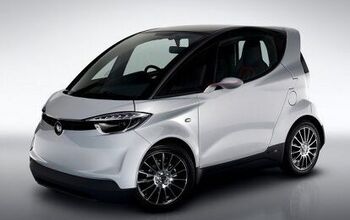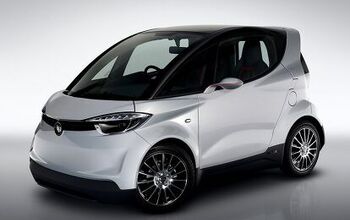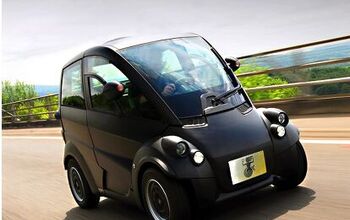The Car, According To Gordon Murray
The New York Times’ Wheels blog recently convinced Gordon Murray to answer a few questions posted by its readers. With the journalists safely out of the way, what followed was a broad, frank and fascinating conversation about the future of the automobile. Sure, there are questions about the past, like how he would update the McLaren F1 vis a vis Veyron and company. Carbon fiber brakes, admits Murray, but he “wouldn’t envisage any other change.” He’d much rather talk about his current project, the T.25 city car. It’s a plastic-bodied attempt at “the next iconic city car, from a styling point of view, as was the 1957 Fiat 500 and the 1959 Mini.” The inevitable question comes: “Why do you want to work on this type of car now, after building the worlds greatest supercar? Murray appears to have been thinking about this thing for a while. “I have built performance cars all my life, and their time, unfortunately, is pretty much over. What we’re working on is a car for the future. It has been a gradual evolution of thought, which started in the summer of 1993 when I was stuck in traffic jam on the way to work.” And he swears it’s for real. “Building an ultra-light but safe and efficient car at a very low cost and sales price requires the exact same lateral thinking and philosophy we applied to the McLaren F1.” And the rule book does seem to have been thrown out. The T.25 has been designed to “to accept any powertrain or fuel,” and Murray claims his firm “can license out our manufacturing process whether we undertake the engineering work for the program or not.” Working with speed freaks (and T.25 investors) Caparo to develop low-cost composites, Murray hopes to kill enough weight and friction to get 80 mpg on a European combined cycle. “The design,” he says, “is small, low-cost and efficient. If this comes close to living up to its potential, it’s going to be a big deal. Given Murray’s history, it’s got as good a shot as any other modular, poly-powertrain, lightweight, iconic city car currently in development. Seriously, read the whole thing.
More by Edward Niedermeyer
Latest Car Reviews
Read moreLatest Product Reviews
Read moreRecent Comments
- MaintenanceCosts If you want a car in this category, you want interior space, comfort, predictability, and low running costs.That probably favors the RAV4 Hybrid, with second place going to the CR-V hybrid. The CR-V is a nicer-looking and nicer-feeling product, but it just has not proved quite as low-drama as the Toyota.The RAV4 Prime is a compelling car but it's extremely expensive and still hard to get, and the regular hybrids are a better value.There's no reason to choose the non-hybrid of either one. You get higher running costs and less refinement for no benefit.
- Aaron Id lean towards the rav4. The crv1.5 turbo has had issues. The rav 4 has both port and direct injection, no cvt. Also the Toyota hybrid systems have been super stout
- Jeff My wife owned a 2013 AWD CRV since new it has been trouble free but I am not a fan of turbos so I would lean toward the Rav 4. If I were getting a hybrid it definitely would be a Rav 4 with Toyota's hybrid system being the best. Honestly you could not go wrong with either a CRV or a Rav 4. My third choice would be a Mazda.
- 3-On-The-Tree We like our 2021 Rav4 non hybrid.
- Vatchy FSD never has been so what is with the hype about robo-taxis? You would need the first in order for the second to work.


































Comments
Join the conversation
I absolutely love dirt-cheap economy cars. Such is why whenever I try to imagine what my imaginary car company would build and market to the public (don't judge my imaginings; you've all done it), it's always low-end and unique. I await the T.25 with baited breath.
Gordon Murray has always had the right ideas conceptually and is well respected in the UK